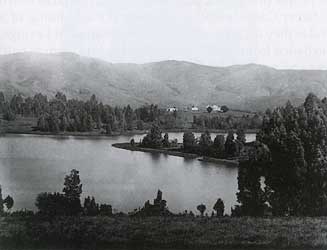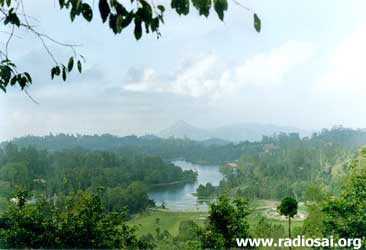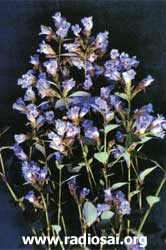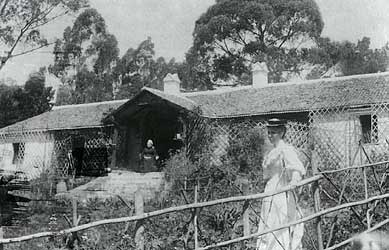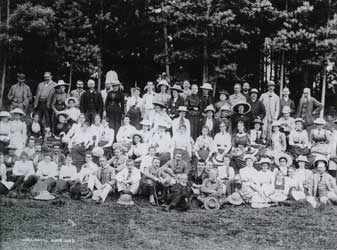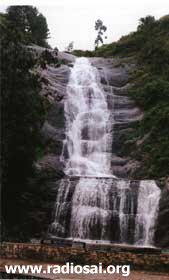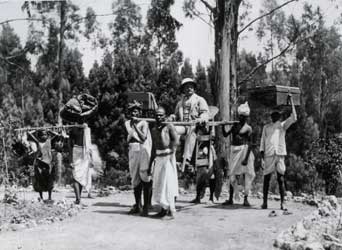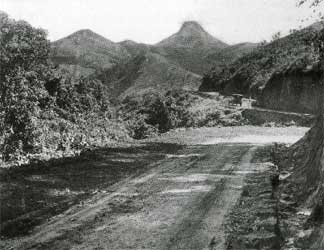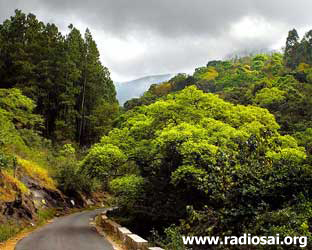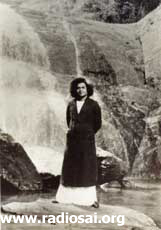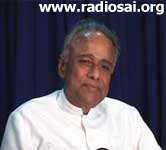 |
 |
 |
 |
| Volume 4 - Issue 07 JULY 2006 |
|
Kodai, Some History And Geography Sai Ram! I am sure you must have heard of Kodaikanal, a popular hill station in South India, especially because Swami often goes there during summer, taking a few select students with Him. I have been blessed by Swami to accompany Him twice in His Kodai trips, once in 2003 and again this year, that is 2006. Apart from this first hand experience, I have also talked to many students, teachers and other elders about their own Kodai experiences. In fact, some of you might have heard over Radio Sai, my chats with Anil Kumar and Narasimha Murthy, about their Kodai trips. Since there is always great eagerness to know about the Kodai visits of Swami, I have decided to offer you, through Radioi Sai, a detailed and ringside account of the 2006 trip, weaving into it also various recalls by various people at various times, besides my own recall of my trip in 2003. I think it is appropriate if I start with a brief description of Kodaikanal and its history. Kodaikanal is a small town nestling in the Palani Hills, near the famous temple town Madurai in Tamil Nadu in South India. The Palani Hlls, by the way, is a small spur jutting out of the main Western Ghats in South India. Kodai is a small town, at an altitude of about 7,000 feet or 2,300 metres, with a nice lake as its hub. Before the British came, the Palani Hills were covered with rich tropical rainforests, called sholas. In fact, the entire Western Ghats was once more or less covered with sholas. Low in height, the trees of a shola forest are full of branches that allow the tree to take the shape of a cauliflower.
The trees are filled with creepers, and inside a shola forest, the canopy of trees spreads out, restricting the penetration of sunlight. The forests are thus cool and dark. People used to live in the Palani hills from prehistoric times, and some of the stone dwellings of that period can still be seen. It was only after the advent of the British that Kodaikanal came to be developed as a hill station. And it was also the British who are responsible for many of the sholas to be replaced with trees native to the England and Australia, such as blue gum eucalyptus, the wattle and so on. Talking of the flora of the region, I should not omit to mention the famous Kurunji plant which flowers once in twelve years. This year, 2006, the Kurunji was in bloom again. This purple floral plant grows abundantly on the slopes of Palani Hills. Its botanical name is: strobilanthuskunthianus.
The first European to visit Kodaikanal was Lt. Ward. This was way back in 1821. Ward was doing a survey of the Palani Hills, and in the process visited the highest point in the hills, which is in modern Kodai. In those days, the forests were really thick and the area was malaria infested. Not withstanding that, inspired by Lt. Ward’s description of Kodai, Mr. J.C Wroughten, then Sub-collector of Madura [as Madurai used to be known then], and Mr. C.R. Cotton climbed up the hills from Periyakulam in the plains, directly below Kodai. In 1834, they built a small bungalow about 10 km from Kodai and started to explore that area. Soon, another person named Dr. Wright joined them, but all these were explorers. The actual settlement of Kodai came about almost by accident. There were many American Missionaries in Madurai then, and they were looking for a place where their staff who had become sick could recuperate. The Americans explored many possibilities and finally decided to build rest houses in what is now Kodaikanal; this happened in 1845. Still, there was no permanent resident there.
1852 - The First Settlement The first person to actually settle in Kodai was Major Partridge of the Bombay Army, who built himself a house in 1852. By the way, it was Major Partidge who introduced the Australian Eucalyptus to that area. Soon, others like Fonclair and Judge Elliot, who was also a planter, followed. However, it was not until Blackburne, the Collector of Madurai built a home there that the development of Kodai gathered pace. Though Kodai boasted of a good climate, somehow the British did not favour it too much; they preferred Ooty instead. Ooty is also a popular hill station in Tamil Nadu near Coimbatore, located on the main Western Ghats. Kodai, on the other hand was preferred by the Americans, and was thus exposed more to American influence than to that of the British. Property was then ridiculously cheap [by today’s standards that is]. For example, the huge property of Major Partridge was bought by the American Mission for just Rs. 154! Forest of Creepers
Sir Vincent Levinge then told the villagers, “Look here! I shall now pay you for building the bund. If at any time you find water shortage during the cultivation season, just let me know.I shall then pay you again to pull down the bund!” For the poor villagers, this was a bonus since there was no one to hire their labour. The basin was fed mainly by three small streams coming down the Kodai hills and it took sometime for the basin to fill and the lake to form. But once it formed, the lake looked grand. There was an outlet through which excess water flowed out and thus the villagers living near Silver Cascade were not too much affected anyway.
The British wanted to keep their families in Kodai and if there was danger, evacuate the families by road to Calicut and take them from there by ship to England. Today, there are plenty of tea estates near Munnar, and people who trek from Kodai to Munnar often encounter elephants!
I was born in Madurai and although I spent most of my childhood in North India, including five years in Karachi, before partition that is, I had heard about Kodai even in the early forties. For one thing, there was in our house, a black and white photo of my father, sitting under a tree near the lake; this picture must have been taken in the thirties. My own first trip was in the early sixties, and subsequently, I made several trips, all at the instance of Prof Richard Riesz of America , who spent twenty-five years teaching physics in the American College in Madurai. When I look back to those times, I see how much Kodai has changed, not always for the better. Tourism may be good for the economy but for the environment? That is a different matter. Anyway, enough of this introduction, and let me get to Swami’s visit to Kodai.
CLICK HERE TO LISTEN TO MR. V. SRINIVASAN [0.99 MB] So, that was how it was, way back in 1981 when Swami visited Kodai. Since then, He has made many Kodai trips. The details might have been different but one thing has always remained constant in every Kodai trip, and that is Swami goes there to give a special dose of Ananda to the people with Him. I hope I have said enough to whet your appetite for more! That’s all for now!!
– Heart2Heart Team |
| You can write to us at : h2h@radiosai.org |
Vol 4 Issue 07 - JULY 2006
|
Best viewed in Internet Explorer - 1024 x 768 resolution. |
DHTML Menu by Milonic. |
